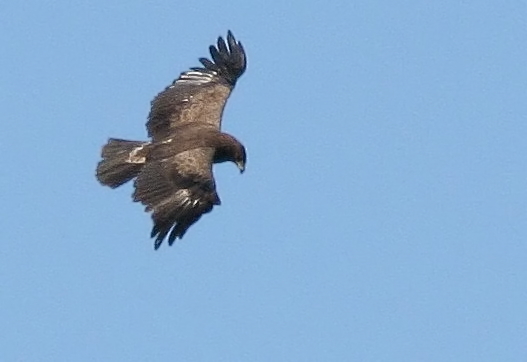Facts About Lesser spotted eagle
The lesser spotted eagle, an intriguing bird of prey native to Eastern Europe, belongs to the Accipitridae family. This medium-sized raptor measures about 60 cm in length with a wingspan of approximately 150 cm. Easily identifiable, it features a pale brown head and wing coverts, dark plumage, and distinctive white markings on its wings and rump. Juveniles appear less contrasting, sporting prominent white spots on their flight feathers.
In terms of classification, the Indian subspecies of the lesser spotted eagle has been elevated to species status and is now known as the Indian spotted eagle. The European population, however, shares a closer genetic link with the greater spotted eagle, both tracing their lineage to a common ancestor that diverged around 3.6 million years ago. The species likely originated in the region of Afghanistan and split into eastern and western clades approximately 2 million years ago.
The lesser spotted eagle's range extends across Central and Eastern Europe, including regions such as Turkey and Armenia. During winter, these birds migrate to Africa. Preferring open or lightly wooded areas for hunting, they primarily prey on small mammals. Typically, these eagles lay one to three eggs in nests built in trees, but usually, only one chick survives due to competition for resources. Their territories are typically well-spaced, and their breeding success depends significantly on factors like climate and prey availability.

 Belgium
Belgium